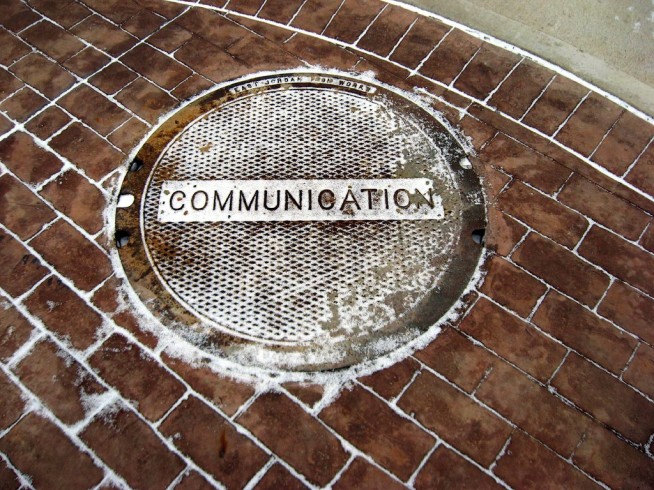Communication is key to staying healthy, happy and thriving in BIZ & LIFE #SayIt
@Terri_Cole (Click to Tweet!)
We all long to be understood. Whether it’s in business or your personal life, everyone wants to feel like they are being heard and that what they say matters. How well or poorly you communicate impacts everything you do. The way you do one thing thing is the way you do everything, most of the time. This means that difficulty expressing your thoughts and feelings in your personal relationships, can easily spill over into the communication in your business and professional life.
Ineffective communication is not only frustrating for the person who can’t seem to spit it out clearly and concisely, but also for the person on the receiving end. When a consultant, co-worker or client conveys their needs, wants or ideas to you in a way that is unclear and scattered it can leave you confused as to what to do. If you ever feel like people just don’t ‘get you,’ your communication style may be why.
As a therapist and an online business owner, I can tell you that what you say and how you say it is vital to your personal and professional success. While not everyone is born with great communication skills I believe that you can learn to more effectively and efficiently express yourself.
There are plenty of ways to improve your ability to communicate. However you must first identify what type of communicator you are.
Close your eyes, take a deep breath, and think. How do you communicate? Are you passive? Do you feel confident enough to share what’s on your mind? Do you exaggerate and use “ALWAYS” and “NEVER” statements? Do you use fear tactics to get what you want? Were you taught that being honest is rude? Remember, you alone are responsible for how you communicate in your relationships.
There are only two ways to communicate: effectively and ineffectively. Below is a comprehensive list of communication characteristics. Take a look and see what resonates.
Ineffective Communication:
-
Indirect: not getting to the point; never clearly stating intention
-
Passive: timid, reserved
-
Antagonistic: angry, aggressive, or hostile in tone
-
Cryptic: underlying message obscured, requiring interpretation
-
Hidden: true agenda never directly stated
-
Non-Verbal: communicated through body language and behaviors rather than words
-
One-Way: more talking than listening
-
Dishonest: false statements are substituted for true feelings, thoughts, and needs
Effective Communication:
-
Direct: to the point; leaving no doubt as to meaning
-
Assertive: not afraid to state what is wanted or why
-
Congenial: affable and friendly
-
Clear: underlying issues are articulated
-
Open: no intentionally hidden messages
-
Verbal: clear language used to express ideas
-
Two-Way: equal amounts of talking and listening
-
Responsive: attention paid to the needs and perspective of the other person
-
Honest: true feelings, thoughts, and needs are stated
Create a snapshot of your communication style. If it is not what you want it to be, what right action are you willing to take to make it better? Can you allow yourself to be vulnerable or try something different?
Now that you have a better idea of how you are in terms of communication, consider how you want to be. Choose one bullet point from the effective communication list above and practice using it for seven days. With intention and focus, you can begin to replace ineffective habits and more effectively express yourself and your needs.
Be patient with yourself and others while you are integrating new expression patterns. Some of your communication skills may stem from childhood, so know it may take time to shift. Have fun practicing this week and know that it is possible to speak your mind with ease and grace. I know you can do this!
Love Love Love,
Terri
Terri Cole is a licensed psychotherapist, transformation coach, and an expert at turning fear into freedom. Sign up for Terri’s weekly Tune Up Tips and follow her on Twitter.
Image courtesy of elycefeliz.












